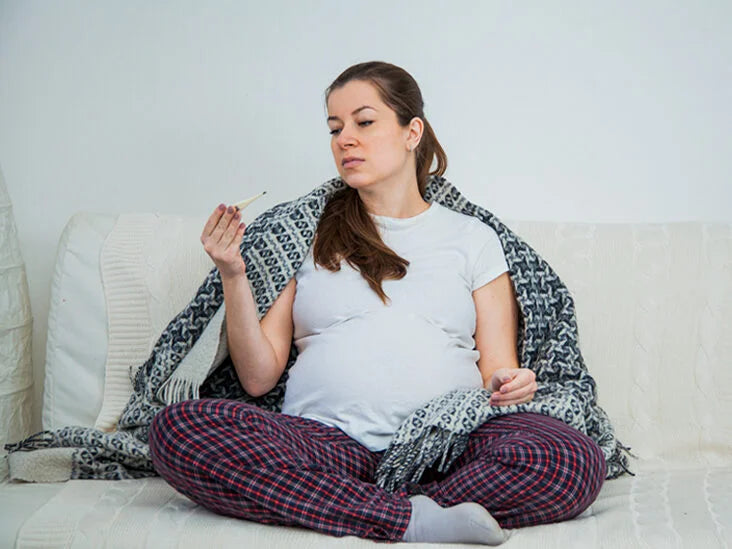Pros And Cons Of Using Heating Pads During Pregnancy
March 27 2023 – Nysh Website

When you're pregnant, you’re responsible for helping your baby grow in a healthy and nurturing environment. In order to do so, there are ample restrictions that you may have to strictly follow. While some of those are easy, a few others might be a little difficult. But the well-being of your baby is a priority and you have to keep those in mind. Something as simple as using a heating pad can cause issues for your baby. If you’re interested in knowing more about that, let's look at some pros and cons of using heating pads during pregnancy.
Why Would You Need A Heating Pad During Pregnancy?
Muscle aches, joint aches, sore muscles, sciatica, round ligament pain, and backaches are common during pregnancy. Many expectant mothers also have to sleep on their sides during most parts of the pregnancy, which can also add to their discomfort. To get relief from those aches and pains, heating pads come in really handy.
But when you have a life growing inside you and the responsibility of taking care of yourself increases, the question often arises - are heating pads safe to use? Are they going to harm the baby? While we do recommend consulting your doctor before using such products, here are some pros and cons of using heating pads during pregnancy that will help you make a better choice.
Pros Of Using A Heating Pad During Pregnancy
- Using a heating pad is a common method of treating muscle and joint pain during pregnancy. It's a non-invasive method that you can use to get rid of muscle and joint pain.
- Heat can help in healing some minor injuries. You can use the heating pad on the affected area for no longer than 20 minutes and it should give you some relief.
- If you have stiff muscles, a heating pad will help loosen your muscles and will improve their mobility.
- When you're pregnant, you’re not allowed to consume most kinds of painkillers and this is when heating pads help. It offers temporary pain relief and is one of the best solutions to your pain.
- Heating pads are used in heating therapy, which is known to increase blood circulation. The heat opens up your blood vessels, which in turn increases blood flow and brings a fresh supply of oxygen and nutrients throughout that area.
- Muscle spasm is also a common occurrence during pregnancy, which can be extremely painful. A heating pad is going to prevent or at least help reduce painful muscle spasms.
Cons Of Using A Heating Pad During Pregnancy
As much as you’d like to get rid of your aches and pains, it's also important that you understand the cons of using a heating pad during pregnancy. Here are a few things to keep in mind:
- Excessive use of a heating pad can increase the core body temperature, which is not good during pregnancy. That can also affect the baby’s temperature in the womb and cause some complications.
- A heating pad should be used in limited scenarios. If you're going to overuse a heating pad, it can cause some serious muscle damage and increase your pain.
- If you have high blood pressure or hypertension, using a heating pad is going to increase the flow of blood in your body. This can have some serious consequences that you don't want to be dealing with, especially while you’re pregnant.
- Heating pads are fire hazards, so using one directly on your belly, back, or any other part of your body is not safe for you or the baby. Do be mindful of the temperatures to avoid getting some serious burns as they won’t be good for both your and the baby’s well-being.
- Heating pads can sometimes increase swelling and inflammation. This could affect your health further and prolong the healing of your pain or aches.
- Skin irritation is one of the other side effects that can be caused by heating pads. You don't want your skin to flair up or get rashes. Overheating can trigger some skin infections as well.
Tips For Using A Heating Pad Safely
If you want to make sure that you're using a heating pad the right way and not causing any harm to yourself or your baby, you need to be cautious when using it. Here are some tips that will help you use a heating pad safely during pregnancy:
- Don't apply the heating pad directly on your bare skin. Always use a towel or a cloth over the heating pad and then use it on your skin.
- Use the lowest temperature on the heating pad when you're pregnant. This reduces the risks of your body temperature rising or getting skin burns.
- Use the heating pad for no longer than 15-20 minutes on your body at a stretch.
- Ideally, avoid using an electric heating pad when you’re pregnant. You don't want to be having direct contact with the heating pad and the switchboard.
- Don't use a heating pad directly near the breast area as it may lead to cancer growth due to its continuous warmth.
- Stop using a heating pad immediately if it makes you feel uncomfortable, sweaty, or sticky.
Summing Up
Every pregnancy is unique and it's second nature for a soon-to-be mom or dad, like you, to be cautious of everything you use or do, as it may affect your baby’s well-being. If you're skeptical about using a heating pad during pregnancy you can try using heat patches for pain, we hope that this article helped you get some clarification. However, it is recommended to consult your doctor once before using any such products during pregnancy.
FAQs
Can A Pregnant Woman Use A Heating Pad On Her Belly?
It’s not advisable for a pregnant woman to use a heating pad directly on her belly. The heating pad could cause some burns to the skin, and that could be harmful to both you and your baby.
Is It Safe To Have A Hot Bath Or Hot Shower While Pregnant?
You can take a lukewarm or a warm bath or shower when you're pregnant. Avoid having a bath with extremely hot water as it may increase your core temperature, which in turn, could affect your developing baby.
What Are The Benefits Of Heating Pads?
Heating pads are used in heating therapy, which is known to relieve cramps, muscle pain, joint pain, backaches, and more.
Can You Use A Heating Pad On Your Back While Pregnant?
Yes, you can use a heating pad on your back to relieve your back pain during pregnancy. However, do remember to use the heating pad at the lowest temperature and for no longer than 15 minutes at intervals.


0 comments